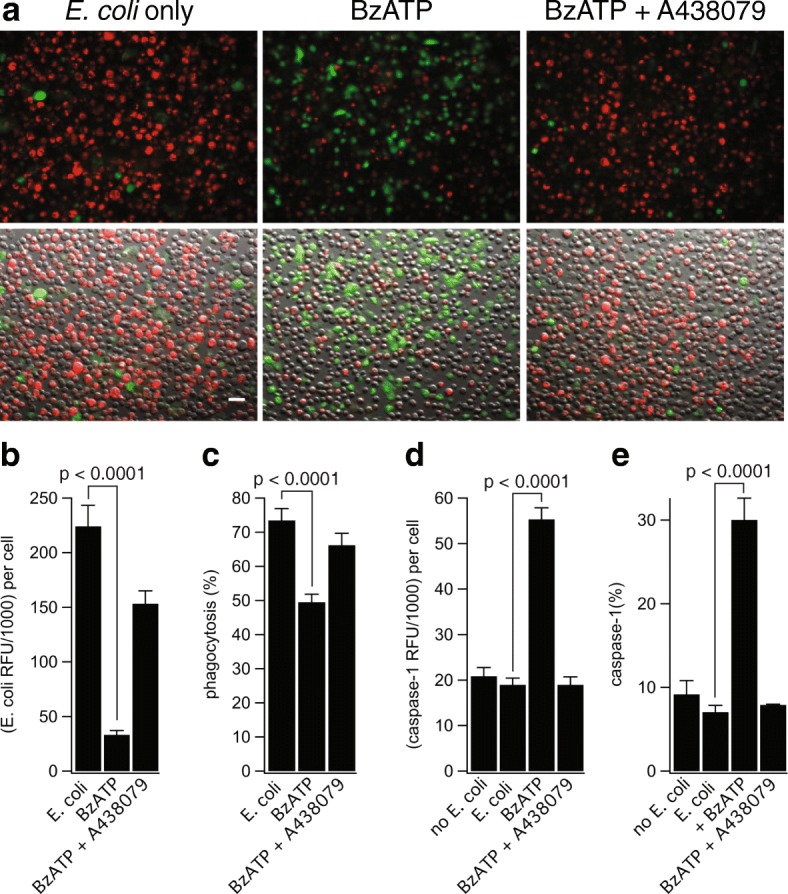Fig. 6.

P2X7R decreases phagocytosis independently of IL-1β release. a Representative fluorescence and clear field images of human microglia incubated with E. coli bioparticles (red) and treated with or without BzATP (300 μM) ± A438079 (50 μM) followed by staining for activated caspase-1 (green). Scale bar: 20 μm. b Human microglia displayed strong spontaneous ingestion of E. coli (224.3 ± 19.1 RFU), and BzATP treatment resulted in strong inhibition of E. coli ingestion (33.37 ± 3.82 RFU). Co-incubation of BzATP with A438079 significantly increased the amount of E. coli ingestion (153.4 ± 11.8 RFU). The histograms show mean ± s.e.m. for “n” of 38–40 cells (p < 0.0001; ANOVA). c Human microglia displayed strong spontaneous phagocytic capacity (73.5% of cells were E. coli positive) and stimulation of the P2X7R with BzATP resulted in strong inhibition of this percentage (49.6%). Normal levels of phagocytosis were restored by antagonizing the P2X7R with A438079 (66.2%). The histograms show mean ± s.e.m. for an “n” of 7–8 separate experiments (p < 0.0001; ANOVA). d, e Activated caspase-1 RFU (d) and percentage of microglia with activated caspase-1 (e) were measured after E. coli treatment. Microglia displayed low levels of caspase-1 activation when treated with E. coli alone (18.37 ± 1.46 RFU, 7.1% of cells), and stimulation with BzATP resulted in strong caspase-1 activation (55.35 ± 2.50 RFU, 30.1% of cells). Normal levels of caspase-1 activation were restored by co-incubation of BzATP with A438079 (18.98 ± 1.73 RFU, 7.9% of cells). The histograms show mean ± s.e.m. for an “n” of 5 separate experiments (p < 0.0001; ANOVA)
